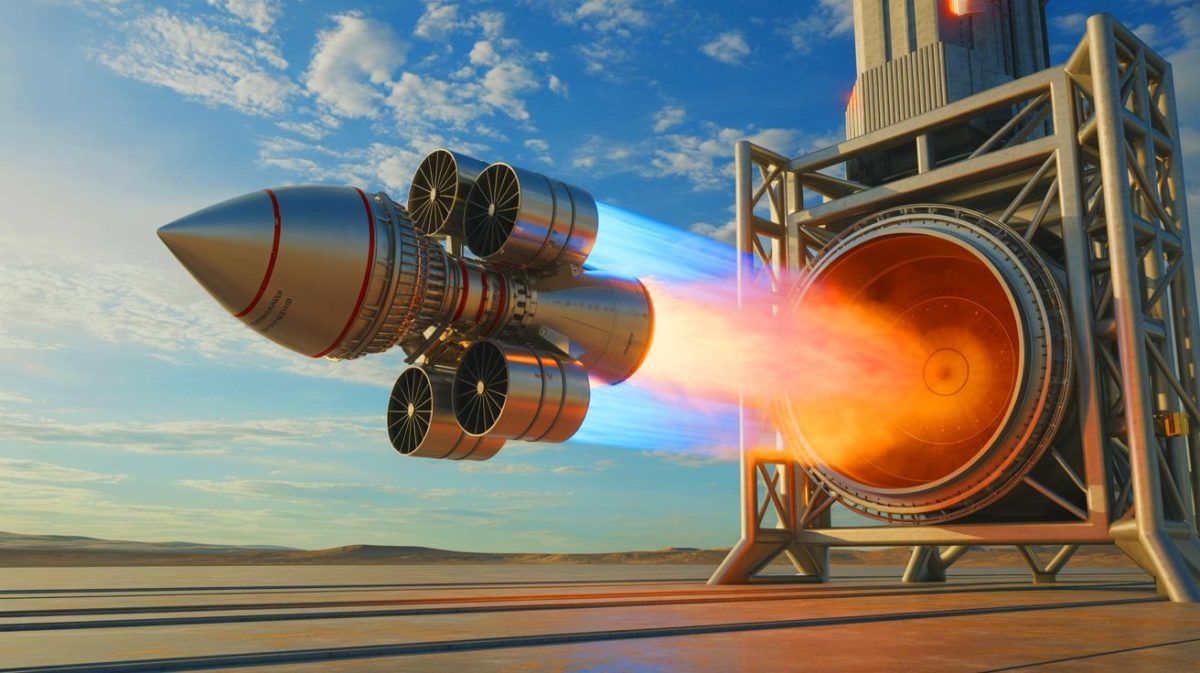| IN A NUTSHELL |
|
Venus Aerospace has made headlines with its successful test of a Rotating Detonation Rocket Engine (RDRE). This achievement could signal a new era in propulsion technology, offering transformative potential for both commercial and military applications. By utilizing supersonic explosions to generate thrust, this engine represents a significant departure from traditional rocket propulsion methods. The test, conducted at Spaceport America in New Mexico, underscores the company’s commitment to advancing hypersonic travel. As we delve into this breakthrough, we explore the technology behind the RDRE, its integration with the VDR2 ramjet engine, and the broader implications for high-speed travel.
The Mechanics of Rotating Detonation Rocket Engines
The Rotating Detonation Rocket Engine (RDRE) stands at the forefront of propulsion innovation. Unlike conventional rocket engines that rely on steady combustion, the RDRE employs a series of controlled supersonic detonations. These detonations occur in a continuous loop within a combustion chamber, creating a high-speed exhaust that propels the rocket forward. This method offers higher efficiency and improved thrust-to-weight ratios compared to traditional engines.
The engine’s design includes a cylindrical chamber where a mixture of fuel and oxidizer is introduced. When detonated, this mixture produces shock waves that travel in a circular pattern. This process not only consumes the fuel more efficiently but also generates increased thrust. Such advancements could pave the way for hypersonic travel, allowing vehicles to take off and land much like conventional aircraft. The potential of this technology is immense, offering a glimpse into the future of space and high-speed travel.
The Role of VDR2 Ramjet Technology
Central to Venus Aerospace’s hypersonic ambitions is the VDR2 air-breathing detonation ramjet engine. This engine is crucial for achieving the high speeds necessary for hypersonic travel. The design capitalizes on the forward momentum of the vehicle to compress incoming air, eliminating the need for moving parts. This is achieved by using a conical inner structure to adjust shock waves, allowing air to decelerate to subsonic speeds, which is vital for engine stability.
One of the challenges with ramjets is their requirement for an initial high-speed boost to initiate the engine cycle. Venus Aerospace addresses this by integrating the RDRE with the ramjet, creating a hybrid system capable of taking off from conventional runways. This synergy enhances the operational flexibility of hypersonic vehicles, making them more feasible for a range of applications, from commercial flights to strategic military missions. The potential for such technology to redefine travel cannot be overstated.
Venus Aerospace’s Vision for High-Speed Travel
Venus Aerospace envisions a future where hypersonic travel becomes a reality for both civilian and military purposes. The successful RDRE test is a critical step toward achieving this vision. The company aims to develop a Mach 4 passenger aircraft, known as Stargazer M4, which will utilize the advanced RDRE technology. This aircraft promises to revolutionize air travel, offering unprecedented speed and efficiency.
While the May 14 test focused on validating the RDRE’s capabilities, future tests will incorporate the VDR2 engine to evaluate the complete propulsion system. These tests will be crucial in demonstrating the viability of hypersonic travel under real-world conditions. CEO Sassie Duggleby has expressed confidence in the technology, highlighting its potential to make air travel both affordable and environmentally sustainable. As Venus Aerospace continues its development efforts, the prospect of reducing global travel times significantly is within reach.
Impact and Future Prospects of Hypersonic Technology
The implications of RDRE technology extend beyond immediate applications. Hypersonic vehicles powered by such engines could drastically reduce travel times, making long-distance journeys more efficient. The ability to take off and land from conventional runways further enhances their practicality, opening new possibilities for commercial use. The strategic advantages for military applications, including rapid deployment and maneuverability, are equally compelling.
While the technology holds great promise, challenges remain in terms of regulatory approval and widespread adoption. Questions about safety standards, airspace management, and environmental impact need to be addressed as development progresses. Nonetheless, Venus Aerospace’s achievements represent a promising step toward a future where high-speed travel is not just a possibility but a practical reality.
As Venus Aerospace continues to push the boundaries of propulsion technology, the potential for global connectivity through hypersonic travel becomes increasingly tangible. What new opportunities will this technological leap unlock, and how will it reshape the landscape of transportation and connectivity on a global scale?
Did you like it? 4.5/5 (30)








Wow, ça semble vraiment être une avancée incroyable pour le voyage hypersonique ! 😮